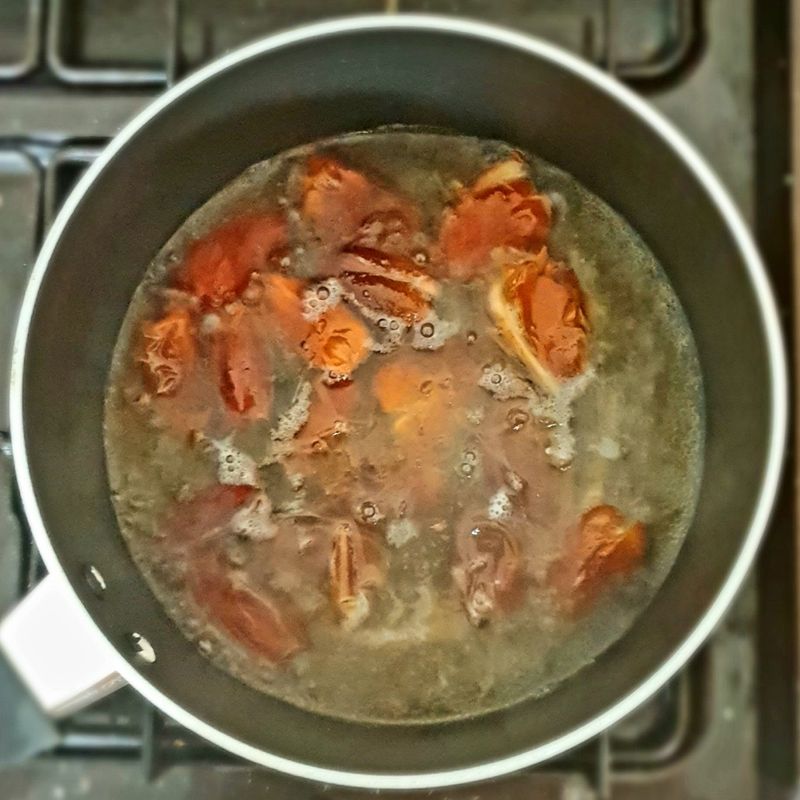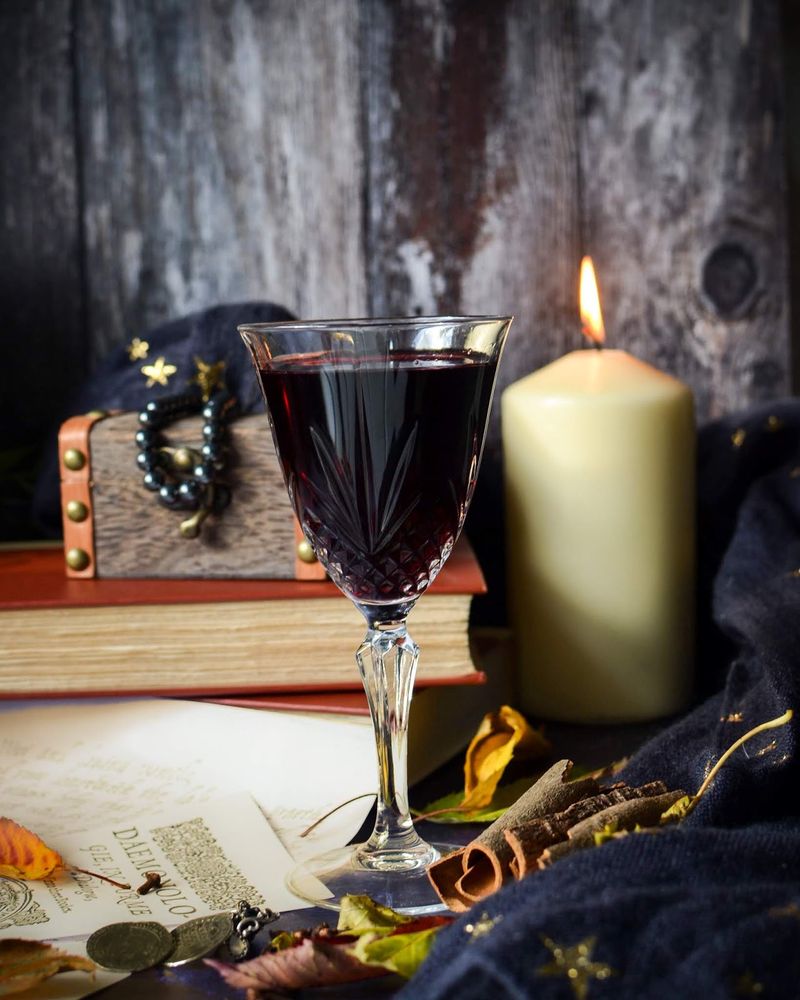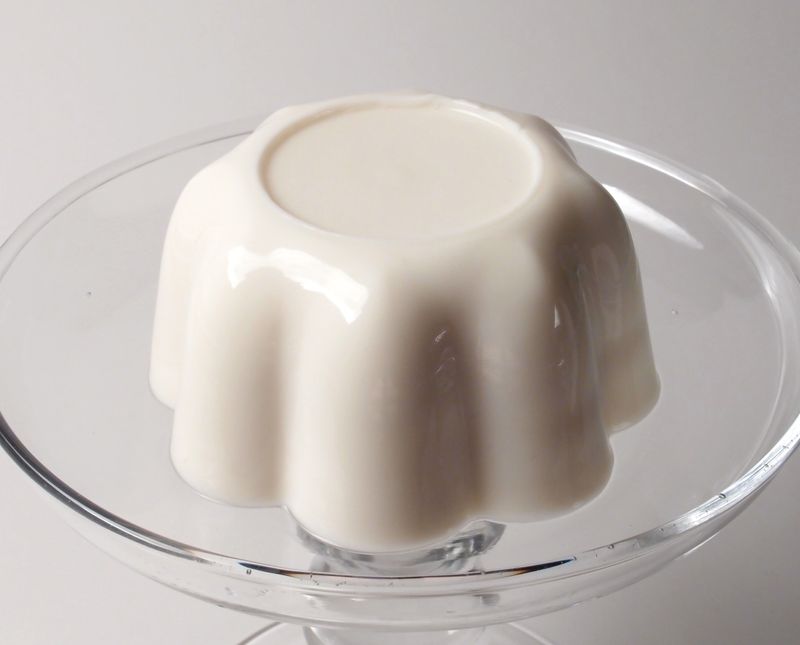Medieval cooks didn’t have air fryers or blenders, but they knew how to turn humble ingredients into bold, unforgettable meals. Think spice-laced stews, roasted meats with fruit sauces, and bread that doubled as a plate.
These centuries-old dishes are making a quiet comeback, reimagined by curious home cooks and adventurous chefs alike.
1. Pottage

Forget fancy feasts—pottage was medieval survival food at its finest! This bubbling cauldron of whatever-you’ve-got stew simmered all day in homes across Europe, from peasant hovels to monastery kitchens.
Families tossed in seasonal vegetables, grains, and occasionally meat scraps, creating a thick, stick-to-your-ribs meal that stretched limited ingredients. The longer it cooked, the better it tasted.
2. Mead-Glazed Meat

Holy feasting frenzy! Mead-glazed meat wasn’t just dinner—it was medieval party food that would make modern foodies weep with joy. Cooks slathered hunks of wild boar, venison, or domestic pig with honey-fermented mead, creating a caramelized crust that sizzled and crackled over open flames.
Spices like cinnamon, cloves, and pepper (worth their weight in gold) were often added to the glaze as a not-so-subtle wealth flex.
3. Trencher Bread

Plates? Who needs ’em when you’ve got trencher bread! These rock-hard slabs of four-day-old bread served as medieval dishware that soaked up all the meaty juices and sauces from the feast above.
Made from coarse, dark grains and baked until sturdy enough to hold a mountain of food, trenchers were the original biodegradable tableware. The wealthy ate the soft insides first, then donated their gravy-soaked trenchers to the poor or fed them to dogs.
4. Frumenty

Porridge gets medieval! Frumenty kicked regular grain mush up about twelve notches with a decadent blend of cracked wheat boiled in almond milk or broth until gloriously thick and creamy.
Knights fueled up on this hearty dish before tournaments, while farmers loaded their bellies before long days in the fields. During Lent, when meat was forbidden, fish frumenty became popular—imagine porridge with chunks of salmon or cod mixed in. Surprisingly tasty and incredibly filling!
5. Cockentrice

Brace yourself for medieval shock cuisine! Cockentrice—half-rooster, half-piglet—was the culinary equivalent of a medieval flex, designed purely to make dinner guests gasp in wonder.
Served at the most extravagant banquets, this bizarre hybrid creature symbolized the host’s wealth and creativity. Practical? Absolutely not. Memorable? You bet your last farthing! Medieval dinner theater at its most outrageous.
6. Elderflower Syrup

Summer in a bottle! Elderflower syrup was medieval refreshment that transformed ordinary water into something magical. Delicate white blossoms were gathered during the brief flowering season and steeped with honey or precious sugar to create a concentrated floral elixir.
Unlike many medieval concoctions, this sweet treat crossed social boundaries—peasants made rustic versions with honey, while nobles added exotic citrus and spices. The syrup wasn’t just delicious; it was medicinal too, believed to reduce fevers and fight the dreaded summer flu.
7. Leche Lumbarde

Cravings for sweets? Medieval folks had ’em too! Leche Lumbarde—a sliceable custard from Lombardy, Italy—satisfied sugar hankerings with its perfect blend of dates, egg yolks, and breadcrumbs, all bound together with honey and wine.
Spiced with cinnamon, ginger, and saffron, this rich dessert was cut into diamond shapes (“leche” meant slice) and sometimes decorated with edible gold leaf and colorful sugared almonds. Served cold at the end of elaborate feasts, it showcased the cook’s skill and the host’s deep pockets.
8. Tansy Cake

Eggs gone wild! Tansy cake—named after the bitter herb tansy—was a springtime specialty that packed more punch than your average dessert.
This vibrant green egg pudding combined beaten eggs, cream, breadcrumbs, and sugar with fresh tansy leaves for a distinctive flavor that woke up winter-dulled taste buds. Some versions included rosewater, nutmeg, or even ground almonds.
9. Minutal

Ancient Rome meets medieval kitchen! Minutal—a zesty stew of chopped fish or meat, fruits, nuts, and vegetables—survived the fall of the Roman Empire to become a medieval favorite. The name means “minced,” which perfectly describes this everything-but-the-kitchen-sink approach to cooking.
Fish minutal combined garum (fermented fish sauce), wine, herbs, and whatever catch was available that day. Meat versions might include lamb, dates, raisins, and pine nuts in a sweet-savory flavor explosion.
10. Hippocras

Party like it’s 1399! Hippocras—medieval Europe’s favorite spiced wine—was named after the ancient Greek physician Hippocrates and supposedly packed medicinal benefits alongside its intoxicating punch.
Wine infused with cinnamon, ginger, cardamom, and long pepper was strained through a special cloth bag called a “Hippocratic sleeve,” then sweetened with honey or sugar. The resulting ruby elixir warmed cold castle halls and brightened dark winter nights across the continent.
11. Pears In Syrup

Fruit hoarding, medieval-style! Pears poached in spiced honey syrup weren’t just dessert—they were culinary time capsules that preserved summer’s bounty for the barren winter months.
Hard cooking pears were gently simmered in wine, honey, and spices until tender, then stored in sealed pots. The liquid transformed into a thick, amber syrup infused with cinnamon, ginger, and sometimes saffron for that touch of golden luxury.
12. Curd Cheese

Cheese-making wizardry! Fresh curd cheese was medieval dairy preservation at its most brilliant—transforming milk that would spoil in hours into protein that lasted for days.
Made by curdling fresh milk with rennet or acidic fruit juices, then straining through linen, this soft cheese became a dietary staple across medieval Europe. The whey byproduct wasn’t wasted either—it fed livestock or became the base for nutritious drinks.
13. Herb-Filled Omelets

Eggs gone medieval! Herb-filled omelets packed a flavorful protein punch that fueled everyone from field workers to castle guards. Unlike our simple breakfast versions, these egg creations were culinary herb bombs—stuffed with whatever greenery was growing nearby.
Cooked in butter or lard in a single-handled pan called a “frying-pan,” these omelets were often finished with verjuice (sour grape juice) or vinegar for a tangy kick. Fast food, medieval-style—ready in minutes and portable enough for workers to carry to the fields!
14. Spiced Almond Milk

Lactose intolerant? No problem in medieval times! Spiced almond milk wasn’t just a trendy alternative—it was essential during the 150+ fasting days when animal products were forbidden by the Church.
Ground almonds steeped in water created a creamy base that monks and nobles flavored with cinnamon, ginger, and honey. This versatile liquid formed the foundation for countless dishes, from morning pottage to elaborate fish stews and sweet custards.
15. Blancmange

White food was all the rage! Blancmange—literally “white food”—was medieval haute cuisine that dazzled banquet guests with its pristine appearance and subtle flavors. This creamy dish combined shredded chicken or fish with rice flour, almond milk, and sugar into a delicate molded creation.
Seasoned with rose water, ginger, and sometimes a touch of saffron, blancmange symbolized purity and wealth. The stark white color came from careful preparation and expensive ingredients like peeled almonds and white sugar.

